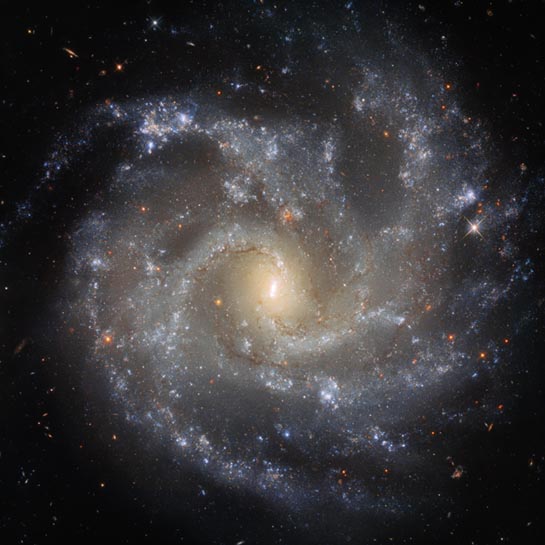
Spiral galaxy
RA 14h 6m 35.01s Dec -5° 27' 15.72"
Virgo
130 million light years
12.5
2.4 x 2.3 arcmin
2.62 x 2.57 arcminutes
North is 157.7° right of vertical
ESA/Hubble & NASA, W. Li et al., Ack: Judy Schmidt
December 2, 2019
ABOUT
THIS IMAGE:
Some of the most dramatic events in the Universe occur when certain stars die - and explode catastrophically in the process.
Such explosions, known as supernovae, mainly occur in a couple of ways: either a massive star depletes its fuel at the end of its life, become dynamically unstable and unable to support its bulk, collapses inwards, and then violently explodes; or a white dwarf in an orbiting stellar couple syphons more mass off its companion than it is able to support, igniting runaway nuclear fusion in its core and beginning the supernova process. Both types result in an intensely bright object in the sky that can rival the light of a whole galaxy.
In
the last 20 years the galaxy NGC 5468, visible in this image, has hosted
a number of observed supernovae of both the aforementioned types: SN 1999cp,
SN 2002cr, SN2002ed, SN2005P, and SN2018dfg. Despite being just over 130
million light-years away, the orientation of the galaxy with respect to
us makes it easier to spot these new 'stars' as they appear; we see NGC
5468 face on, meaning we can see the galaxy's loose, open spiral pattern
in beautiful detail in images such as this one from the NASA/ESA Hubble
Space Telescope.